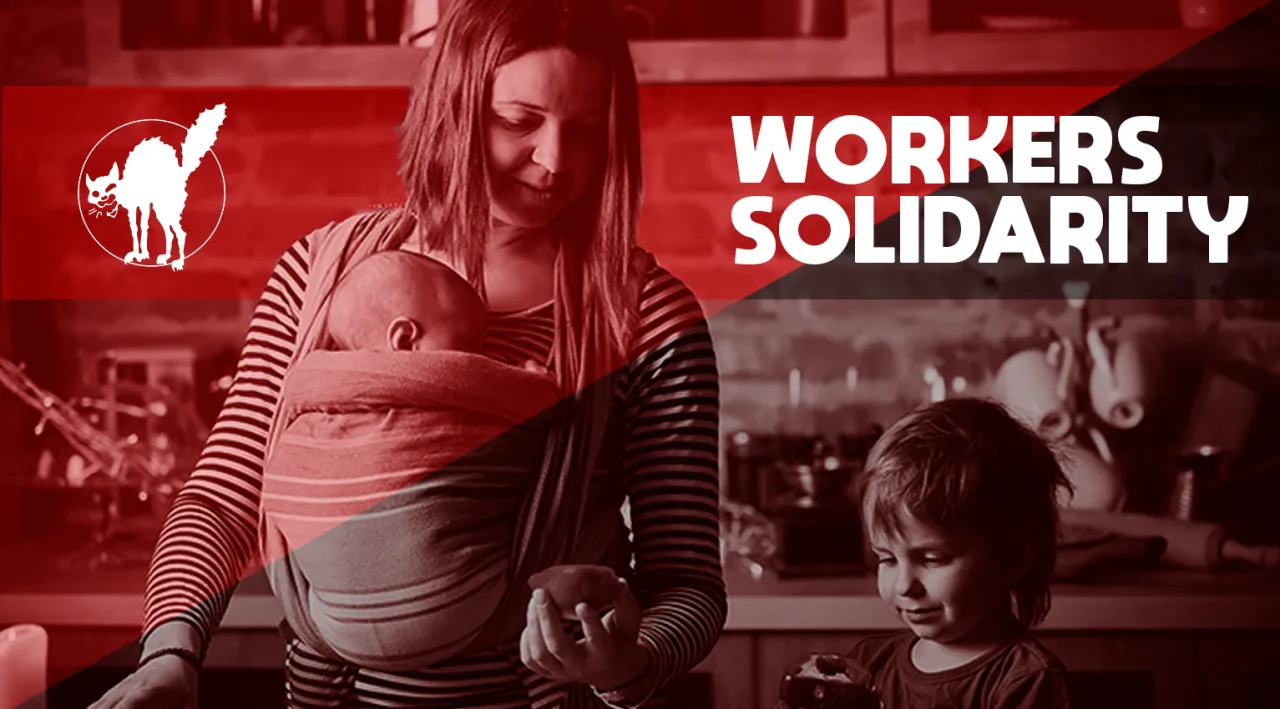Free-market capitalism can’t function without colossal subsidies from unpaid domestic care work
We hear a lot about the alleged superior virtues of the market economy, like independence and self-reliance. Like most things about the market economy and its positively sacred social and class hierarchies personal boundaries not so much, its claims to rugged individualism are self-serving fairy tales. This is as obvious as in the domestic sphere as anywhere.
While market-driven wisdom holds the domestic sphere and the world of work to be separate and distinct, nothing could be further from the truth. A great fact about the world we live in, one that hides in plain sight, is that capitalist class hierarchies could not survive without colossal amounts of unpaid domestic care labour (i.e. parenting).
Unpaid domestic care labour is value-creating work that puts dividends in the pockets of shareholders. This is what happens when value-added human capital (our children) leave home and enter the world of wage slavery labour.
In other words, the market economy can work because parents (predominantly women) perform unpaid domestic care work in the home raising children to adulthood and (nominal) independence.
As the Australian government’s own statistics reveal, unpaid domestic care labour is critical to the capitalist economy. According to ‘The Value of Care and Nurture Provided by Unpaid Household Work,’ the economic value of unpaid domestic care labour outranks any industry we currently consider value-producing work:
It is clear from these data on labour inputs that the three largest industries in the economy are not in the market sector but are in the everyday household activities of (1) preparing meals, (2) cleaning and laundry and (3) shopping. Each of these activities absorbs about 70 mhw of labour time; the three largest market industries require rather less labour: wholesale and retail trade 55 mhw, community services (health and education) 47 mhw and manufacturing 42 mhw.
Family Matters No. 37, 1994, via https://aifs.gov.au/research/family-matters/no-37/value-care-and-nurture-provided-unpaid-household-work
The upshot of this fact is clear: if exploiters of wage labour had to pay the market equivalent (e.g. a nanny) for the work unpaid domestic care workers now perform for free, they would not be able to hoard profits or sit on mountains of gold like gold dragons from a J.R. Tolkien novel.
Countries like Australia with some remaining vestage of welfare state liberal capitalism do offer a parenting payment. This is not, however, even halfway consistent with the value that domestic care labour injects into the economy, ie as the single greatest contributor to GDP last time anyone checked. It could even be argued that parenting payments are a further subsidy to the free market (freedom for owners of capital).
As the Panama Papers helped to reveal some time ago, the international corporate aristocracy hoards an estimated USD$21-32 trillion dollars in offshore bank accounts.
This is all surplus extracted from wage labour paid less in wages than the value it produces. It is all surplus extracted from domestic care labour that isn’t paid at all—despite being the most productive sector of the economy last time anyone checked!
As Silvia Federici points out in Revolution at Point Zero, if the market economy had to pay for the unpaid domestic care work it gets for free, it would cease to be viable. The fact that laissez-faire capitalists can hoard trillions in being allowed to get away with not paying for domestic care labour just goes to show how critical its devaluing and invisibilisation actually is.
In writing about gendered hierarchies of power, Val Plumwood noted that relationships of domination and control are chararacterised by hidden relationships of dependency.
The predatory abuser, Plumwood points out, must disguise their dependence on their victim. The victim must never understand their importance to their exploiter, lest they become aware of their own power.
In the context of unpaid domestic care labour, the predatory class abuser needs to hide their dependence by devaluing and invisibilising domestic care work as work.
Domestic care workers must feel that their value-producing work isn’t work, but a social obligation, or a way of keeping up with the Joneses (definitely a priority in a society where we invest our identity in consumption habits).
As a hierarchical society rooted in predation and social control, domestic care workers should be shamed for not having children and be made to feel like there’s something wrong with them if they don’t reproduce.
Domestic care workers should not, however, be supported when they do have children—much less to say remunerated for their value-creating work, even from the USD$21-32 trillion in offshore bank accounts.
Domestic care workers must be invisibilised and devalued, so they be controlled, so they won’t ask questions about performing intensely valuable work for a dependent capitalist class completely for free.
Domestic care workers must be kept on short control leash so they they won’t notice how a predatory class takes colossal subsidies through their unpaid work, as it preaches rugged individualism and pulling oneself up by one’s bootstraps for the vassals it exploits at the same time.
The extractivist corporate aristocracy need to exert coercive control as a class to disguise its dependence unpaid domestic care labour. It is dependent on unpaid slaves in the domestic sphere as it has been historically on enslaving the Global South through colonialism and military conquest.
Coercive control is as much a feature of unpaid domestic care labour as it is of domestic abuse. One might argue that the class hierarchies lay the foundation for the misogyny that feeds domestic violence as an outcome of their core culture of predation and control.
The devaluing and invisibilising of the domestic care work performed mainly by women is a direct outcome of misogyny, of the notion of rigid gender roles and of the devaluing of women’s work and of women under capitalism in general.
It is a reflection of the coercive control culture inherent to the social and class hierarchies apparently considered positively sacred under capitalism (though personal boundaries not so much).
We need to organize cooperatively and non-hierarchically to challenge capitalist predation on domestic care labour. We need to recognize domestic care labour as work and its value not only to society in general, but to the nominally laissez-faire market economy in particular.
Just as in the case of domestic violence and abusive relationships, the beginning of the end of abuse is the moment the party being preyed on and having their boundaries stomped all over understands their true value to their abuser.
Just as in this instance, domestic care labourers need to understand their true value to themselves and one another as a class of exploited subalterns. No greater threat exists for their abusers and exploiters than when they understand and act on their class power as workers in the domestic sphere.





